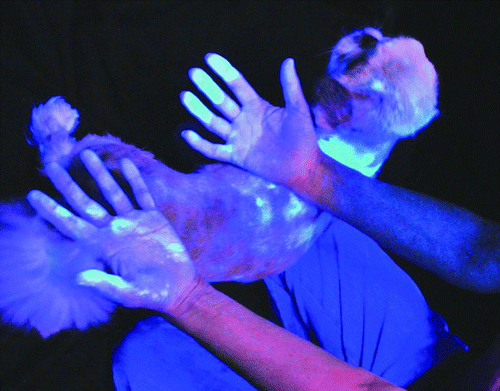We all want our furry friends to be safe from fleas and ticks. But some popular treatments—like spot-on liquids, collars, sprays, and foggers—can leave behind harmful chemicals.
Why this matters
These treatments contain pesticides (like fipronil and imidacloprid) that stick to your pet’s fur, your hands, your bedding, and other surfaces around your home.
When you wash your pet or their bedding, these chemicals flow into sewers. Unfortunately, treatment plants often can’t fully remove them. They end up entering San Francisco Bay at levels that harm aquatic life.

Why you should care
By avoiding pesticides, you’re protecting more than just your pet:
- Your family is safer with fewer toxic residues throughout your home.
The California Department of Pesticide Regulation (DPR) reviewed the use of fipronil (a common ingredient in pet/carpet sprays and on-pet topical treatments) and found a potential human health risk to adults and children in households where sprays and topicals are used.[1,2] - The Bay stays healthier for wildlife and us — free from pesticide pollution.
What you can do instead of applying pesticides
1. Ask your vet if chewable or injectable flea and tick medications are an option for your pet
Not only do oral and injectable medications reduce your exposure to toxic chemicals, they also may be more effective than topical spot treatments. Some chewable products also protect pets against internal parasites like heartworm and roundworm.
2. Avoid high-risk ingredients
- If you use topical treatments, avoid deltamethrin, dinotefuran, fipronil, imidacloprid, indoxacarb, and permethrin.
- If you use flea shampoos, avoid bifenthrin and permethrin
- Skip sprays, foggers, and “house bombs”; they often leave a residue and expose your household to unnecessary chemicals
3. Stop problems before they start
- Vacuum and clean your home often.
- Wash pet and human bedding regularly.
4. Use simple, safe tools at home
- Use a flea comb, focusing on the neck and legs, and dunk it into soapy water to trap fleas.
- Keep your dog’s coat trimmed. A short coat makes combing easier, and makes ticks easier to see.
- Try flea traps to locate and see how big the problem is.
5. Keep ticks away
- Stay to the center of trails, and use shorter leashes.
- Check your pet (and yourself) thoroughly after walks—eyes, ears, tail base, under the collar.
- Keep a tidy yard. Clear tall grass and create a 3-foot barrier (like gravel or wood chips) between lawns and wooded areas.
How These Chemicals End up in the Bay
- Bath time: Even though product labels claim otherwise, spot-on treatments wash off during baths and go straight into the wastewater system.
- Washing bedding: Chemicals from bedding and garments can flow off and contaminate wastewater too.
- Outdoor sprays: Rain washes the chemicals off lawns into storm drains—and those usually drain straight into local creeks and the Bay.
Find guidance for veterinarians here.
References
- All DPR fipronil risk assessment documents are available at http://www.cdpr.ca.gov/docs/whs/active_ingredient/fipronil.htm
- Fipronil Risk Characterization Document, Human Health Assessment Branch, Department of Pesticide Regulation, California Environmental Protection Agency. March 2023. https://www.cdpr.ca.gov/docs/risk/rcd/fipronil_rcd.pdf





